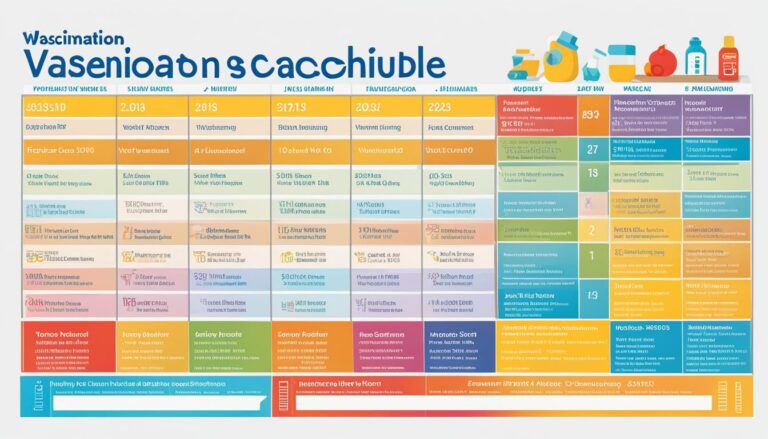Baby Sign Language: A Useful Tool for Communication
As a parent, you want to find effective ways to communicate with your baby. Baby sign language is a valuable tool that can bridge the communication gap between you and your little one. It allows babies to express their wants and needs before they can speak, reducing frustration and tantrums. Not only does it benefit your baby’s development, but it also strengthens the bond between you.
Teaching baby sign language can start as early as 6 months, and the benefits are numerous. From closer parental bonds to improved cognitive skills, incorporating sign language into your baby’s life can have a positive impact. It can even help bridge communication barriers with individuals who are deaf or hard of hearing.
Ready to get started with baby sign language? Check out some recommended resources like infant signing tips from WKAR, the baby sign language sign chart from Baby Sign Language, and the Two Little Hands Production Sign Language Dictionary from Signing Time!
Key Takeaways:
- Baby sign language allows babies to communicate their wants and needs before they can speak.
- Teaching baby sign language can start as early as 6 months.
- Benefits of baby sign language include closer parental bonds and improved cognitive skills.
- Sign language can bridge communication gaps with individuals who are deaf or hard of hearing.
- Recommended resources for learning baby sign language: infant signing tips from WKAR, baby sign language sign chart from Baby Sign Language, and the Two Little Hands Production Sign Language Dictionary from Signing Time.
Benefits of Baby Sign Language
Baby sign language offers three types of benefits: practical, emotional, and cognitive. Let’s explore each of these in detail:
Practical Benefits
One of the practical benefits of baby sign language is less fussing and more fun! When babies can communicate their wants and needs through signs, it reduces frustration and tantrums. They can let their parents know when they are hungry, thirsty, or tired, leading to a smoother caregiving experience. Baby sign language also helps caregivers understand specific preferences, such as which toy the baby wants or if they are uncomfortable in a certain situation.
Additionally, baby sign language can be incredibly helpful when communicating with individuals who are deaf or hard of hearing. It bridges the communication gap and allows babies to interact with a wider range of people.
Emotional Benefits
Using baby sign language can strengthen the emotional bond between parents and their babies. When parents learn and use signs together with their little ones, it creates a sense of shared understanding and connection. Both parents and babies feel more tuned in to each other’s needs and desires, enhancing the parent-child relationship.
Baby sign language also promotes early communication and responsiveness, which can boost a baby’s confidence as a communicator. When babies see that their signs are understood and their needs are met, it builds trust and a sense of security.
Cognitive Benefits
The cognitive benefits of baby sign language are remarkable. Research has shown that babies who learn sign language exhibit an advantage of 12 IQ points compared to their non-signing peers. Signing babies also tend to have a larger speaking vocabulary, earlier reading skills, and better grades in school. The use of sign language stimulates brain development and language processing, giving babies a head start in their cognitive abilities.
Furthermore, signing encourages babies to think more critically and express their thoughts more clearly. It helps them develop better problem-solving skills and enhances their overall cognitive abilities.
With all these benefits, it’s clear that baby sign language is a valuable tool for both babies and their parents. It improves communication, strengthens bonds, and supports cognitive development, setting the stage for a positive and fulfilling journey of language acquisition.

Teaching Baby Sign Language
Baby sign language is a powerful tool for enhancing communication between parents and babies. By using signs and gestures, babies can express their needs and desires before they can speak. Teaching baby sign language can begin as early as 6 months and has numerous benefits for both baby and parent.
To start teaching baby sign language, you can use formal signs from American Sign Language (ASL) or create personalized signs that are easy for your family to understand. The key to success is repetition and consistent use of the signs. Begin with signs that are meaningful to your baby, such as “more” or “all done.” When using the signs, say the corresponding word aloud to help your baby make the connection between the sign and the spoken word.
Many parents worry that teaching their baby sign language will slow down their verbal development. However, research has shown that this is not the case. In fact, baby sign language stimulates the desire to learn more communication techniques and does not hinder the development of verbal skills. It also promotes engagement and social interaction for your baby, leading to better communication and bonding between you and your little one.
While baby sign language may not make your baby a genius, it provides a valuable means of communication and strengthens the parent-child relationship. So go ahead and give it a try! Discover the joy of communicating with your baby through signs and gestures, and watch as their understanding and expression of language blossoms.
FAQ
Is baby sign language beneficial for communication between parents and babies?
Yes, baby sign language is a beneficial tool for communication between parents and babies. It allows babies to express their wants and needs before they can speak, reducing frustration and tantrums.
When can I start teaching my baby sign language?
Baby sign language can be taught as early as 6 months. It is never too early to start introducing signs to your baby.
What are the benefits of baby sign language?
Baby sign language offers practical, emotional, and cognitive benefits. The practical benefits include less fussing and more fun, as babies can communicate their wants and needs. The emotional benefits include a closer parental bond, as parents and children feel more tuned in to each other. The cognitive benefits include boosted brain development, larger speaking vocabulary, earlier reading skills, and better grades in school.
How can I teach baby sign language?
Baby sign language involves teaching babies signs and gestures for different words or phrases. It can be started with formal signs from American Sign Language (ASL) or personalized signs created by the family. Repetition and consistent use of signs are key to teaching baby sign language. It is recommended to start with signs for things that are important to the baby, such as “more” and “all done,” and to sign and speak the word simultaneously.
Will baby sign language slow down my baby’s verbal development?
No, baby sign language does not slow down verbal development. In fact, it stimulates the desire to learn more communication techniques and promotes engagement and social experiences. It does not necessarily result in a smarter future, but it improves communication and bonding between parents and babies.
Does baby sign language improve verbal skills?
Yes, baby sign language can improve verbal skills. Signing babies have been found to have a larger speaking vocabulary and exhibit better verbal skills overall.






